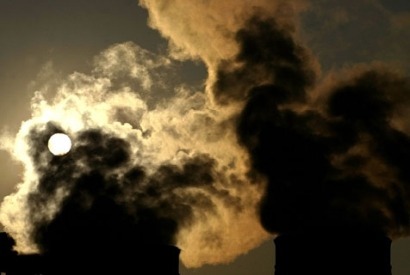
Everyone in the UK is aware of green energy for one reason or another, whether it is Alex Salmond championing it as part of the SNP’s independence or Donald Trump claiming it will spoil our idyllic countryside. One technology that may have slipped under your radar, which could have a major impact on the Scottish economy is Carbon Capture and Storage, or CCS for short. CCS is a technology which captures the carbon dioxide emissions produced from the use of fossil fuels in electricity generation and prevents it from entering the atmosphere. The CO2 is then transported offshore and stored under the seabed. Sounds simple doesn’t it?
Your first question might be “why is this green energy when it still uses fossil fuels?” In truth, a more accurate description would be clean energy, rather than green. Whilst it may not be as green as wind or tidal energy, it can be considered a lot more reliable than the current green technologies that cannot supply 100% of the UK’s electricity demand alone and struggle with intermittency issues. The new onshore plants will often be built on the sites of old plants in industrialised areas, meaning the visual impact will less than wind farms or surface piercing tidal technologies built in rural areas.
A recent Scottish enterprise report highlights the potential of a North Sea Storage area enabling the development of a CCS industry in the UK. The report shows the potential for a Central North Sea Storage area to receive and store as much as 100 million tonnes of C02 a year by 2030 and 500 million tonnes a year by 2050. Another recent addition has been the industry and government sponsored Centre for North Sea Enhanced Oil Recovery with CO2 involving the University of Edinburgh and Heriot-Watt University. This centre will look into how this CO2 can be used for Enhanced Oil Recovery (EOR). This technology could enable the recovery of an additional 3 billion barrels of oil, worth approximately £190 billion.
Commoditising carbon in this way will create an industry in itself for capture and transportation, leading to jobs and innovation. The additional oil production will extend the life of North Sea oil fields, protecting offshore jobs and creating them in niche areas for technology development. If the true potential of the technology is realised in the UK it could create more jobs in the sector and it will see the UK take a first mover advantage into what will be a global industry, allowing for the export of skills and technologies.
This birth of an industry is not far away. The first new build power plant could be up and running by 2016. The government has launched the £1bn DECC CCS commercialisation programme and will make a decision about what projects to back in April 2013. The two front running options are the Don Valley Project planned to be built in Doncaster with a pipeline to the North Sea for EOR and the Captain Clean at the Port of Grangemouth capable of storing the CO2 beneath the seabed. Both plants will use integrated gasification combined cycle IGCC technology.
Both options would boost the Scottish economy considerably and, in this time of recession, it is welcoming news. As with everything, there is a downside; producing electricity using CCS technologies is more expensive than the current methods. What this means for you and I, is rising energy bills and more money each month to heat and power our homes. However, I believe this is an attractive option to allow the UK to be an independent energy nation, rather than importing power from overseas or even worse, an energy shortage. It also overcomes some of the drawbacks concerning the unpredictable output of the wind, waves, tides and sunshine.
Time will tell on this technology. Like all clean energy technologies, it will have its champions and sceptics but, it is my opinion we need to look at options like CCS seriously if we want to achieve the Carbon Emissions Targets by 2050… and keep our lights on in the meantime.
[Editor’s note: Jim Walker is a Senior Consultant at Taylor Hopkinson Associates.]
CCS has two existential threats. One is the successful development of energy storage for intermittent renewables (wind, solar, waves). There is a lot of talk of pumped storage and batteries, but the real winner for large-scale, night-week-month storage will be hydrogen created by water electrolysis and stored in underground salt caverns. But the other threat to CCS is higher prices for natural gas and coal, and their eventual supply insecurity. They are non-renewable! Global peak coal was probably last year. Yes, more tonnes of coal are being mined, but they are poorer and poorer quality, having less net energy or requiring more energy to remove sulfur, mercury, particles, etc. CCS has a time window of about 4 years to show technical success and commercial competitiveness, after that, renewables and quantum improved energy efficiency in all we do will be unbeatable. Stay tuned.

